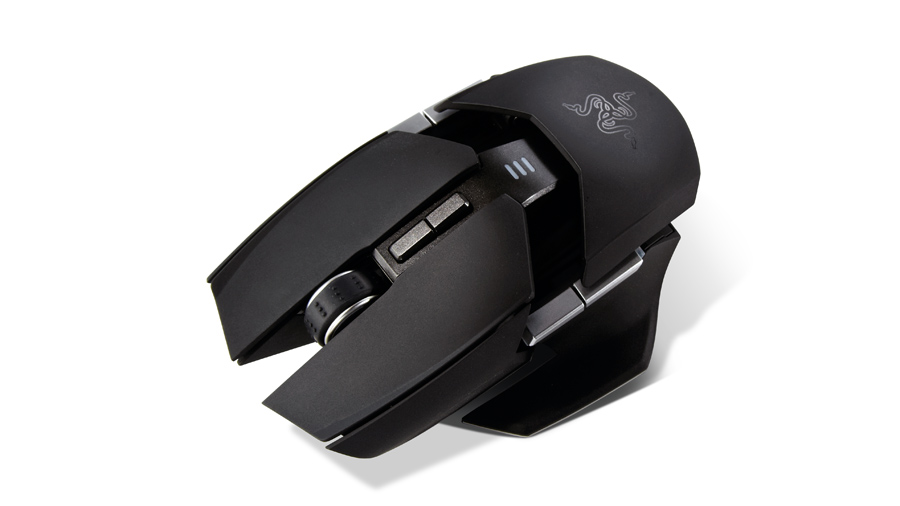TechRadar Verdict
Pros
- +
Good tracking when wired
- +
Customisable design
Cons
- -
Poor wireless performance
- -
Price
Why you can trust TechRadar
When you're trying to sell a gaming mouse for more than £100, it has to be something very special. Luckily for us, Razer is experienced in the ultra high end of the market, with its Mamba wireless mouse also retailing for north of a ton.
It's not the only money-hungry mouse-maker, either - Mad Catz demands £120 for the privilege of owning its RAT 9.
You don't have to be Richard Feynman to start seeing a pattern here; all these hyper-expensive rodents are wireless, with high sensitivity levels and high frequency wireless connections - and the Razer Ouroboros has the highest DPI settings we've ever seen.
But does wireless technology justify charging this much cash? The obvious answer is no, and that's something that Razer seems to understand, because it's throwing in as many extras as it can.
It's aping the RAT series by trying to make the layout as customisable as possible. However, unlike the RAT rodents, it's offering that level of customisation to everyone - not just right-handed gamers.
The ambidextrous design will only really interest the oppressed left-handed minority of gamers, but this is a nicely designed bit of kit and feels as good in the hand as it looks on the desk.
There are multiple attachments you can add on to the sides of the chassis, offering support or grip either side, and there's no need to mess around with allen keys. The pieces are attached via strong magnets, which give no hint of failing mid-frag.
Eat yourself
The same cannot be said of the wireless capabilities of the Ouroboros. We found it practically impossible to fully trust the mouse in either desktop use or in-game.
We're not entirely sure which is at fault - whether it's the hardware or the software - but every time you try to change DPI settings on the fly, the mouse struggles to keep up, introducing massive amounts of lag for long seconds in-game. It will sometimes randomly unlock the X and Y axis DPI settings too, introducing different settings for each axis without a by-your-leave.
The battery performance leaves a lot to be desired, too. Our first battery randomly turned the device off or ran dry in a matter of minutes, and the second one barely got close to offering the 12 hours of gaming the Razer site claims. It wouldn't even survive 12 hours of general desktop use.
It's a different story when it's plugged in though, suddenly feeling like the high-end mouse it should. The tracking is good, though possibly not quite in the same league as the Ballista or the M65 from Shogun Bros and Corsair respectively, and it feels really responsive in-game.
However, the fact that we are still leaning towards gaming mice that cost half as much says a lot about the Ouroboros. The customisation options are not much more than you get with a RAT, and the poor wireless performance negates any price premium such technology might normally dictate.
It's a real shame. If Razer had shipped the Ouroboros as a wired mouse with a £70-£80 price tag, it would have gotten a lot more lovin'. As it is though, there's absolutely no way we could recommend this high-spec wireless rodent.
